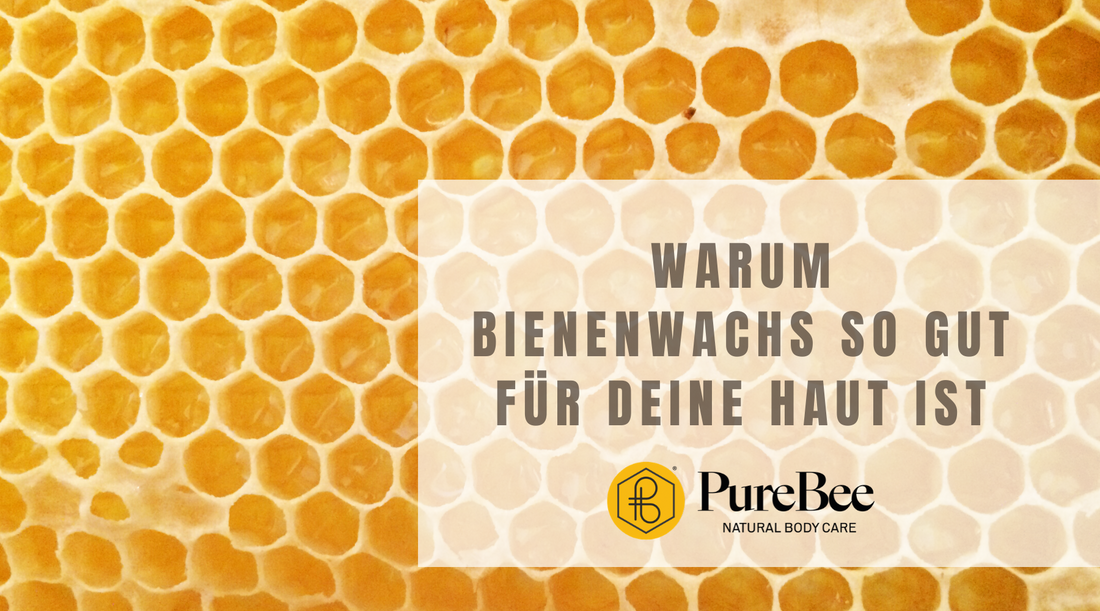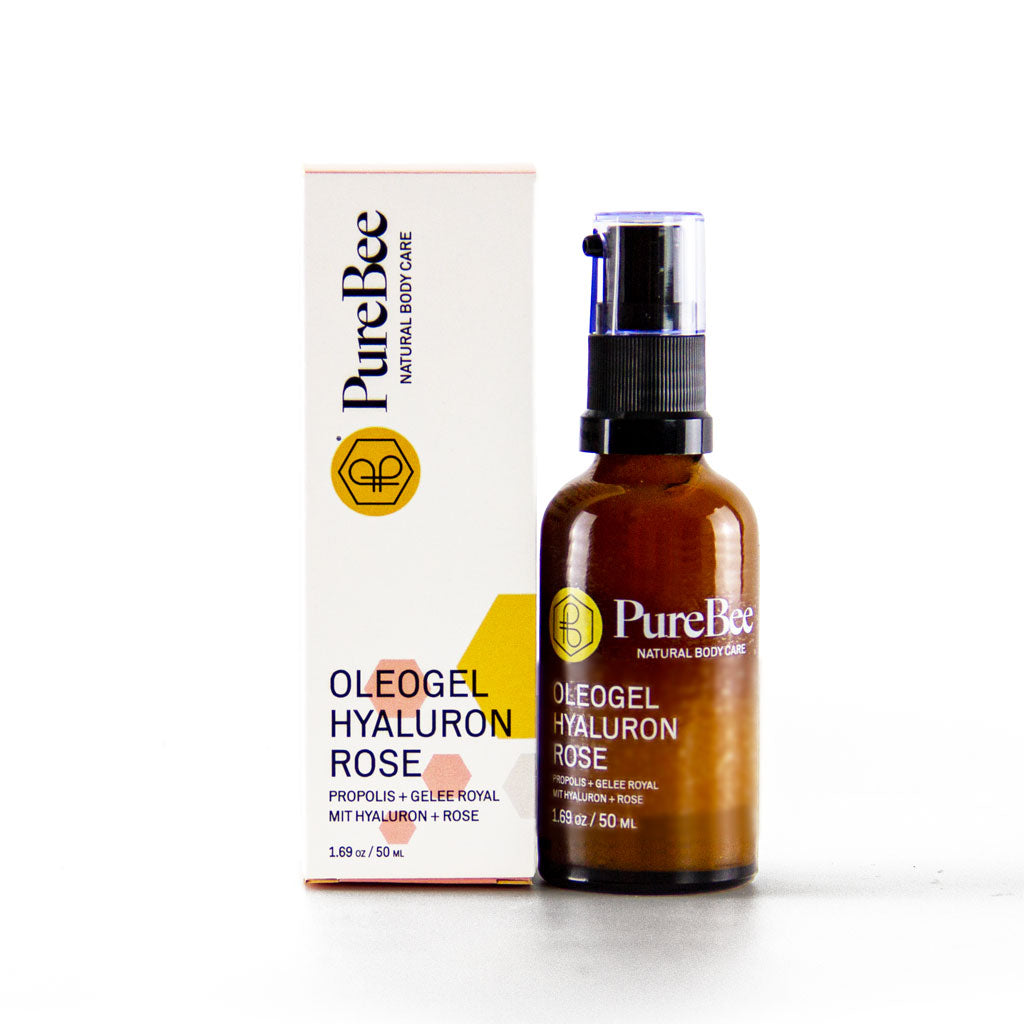Honey bees actually produce the natural wax themselves. The young worker bees, aged 12 to 18 days, are particularly busy producing the wax. Although older bees can also produce the wax if necessary, there is generally a separation of work in the hive and the older generation only reanimates their wax glands if there is an absolutely urgent need. And here we are with the "how?". Each bee has 8 tiny glands through which it can produce wax plaques. These tiny flakes (one weighs about 0.08mg, so about 12.5 million wax flakes are needed for 1kg of wax) are initially white and no larger than a match head. This white plate is now kneaded by the worker with her mouth tool. Propolis, pollen and glandular secretions are also kneaded in here and it gets its typical yellow colour. The finished wax is now used to build those perfect hexagonal shapes we all know. The cells then serve first as a breeding ground for the baby bees and then as a storage chamber for the honey. The beeswax that we use in our cosmetics is obtained by melting and cleaning the emptied honeycomb with hot water.

Why beeswax is so good for our skin
Share
WHAT IS BEESWAX EXACTLY?
ARE THERE ANY DIFFERENCES?
Natural beeswax is light to dark yellow in color and smells slightly like honey. This wax is also called Cera Flava and has only been cleaned of impurities and bacteria. The melting point is between 61 and 66 degrees Celsius and it is also easy to knead with your hands. We only use this yellow, natural beeswax in our cosmetics. There is also white beeswax called cera alba. However, this is often of inferior quality and bleached with chemicals. In addition, it lacks the typical scent of honey.
WHAT'S IN THE BEESWAX?
Without drifting too far into the chemistry, we would like to point out some of the components of beeswax. It consists of a large proportion (over 65%) of myricin, a mixture of substances consisting of esters, acids and long-chain alcohols. It also consists of several acids, saturated hydrocarbons and bee-specific flavorings. The ingredients can be checked using a so-called chromatographic method. This analysis is carried out on each batch to check that the beeswax has not been diluted with paraffins and to ensure that there are no drug residues in the wax.
These residues are mainly caused by fighting the dangerous Varroa mite, which was introduced from Asia. The mite attaches itself to bee pupae that have not yet hatched, with the result that the animals hatch much smaller and weaker and have a shorter lifespan. In addition, the mite also transmits diseases and viruses, leading to bee deaths. The mites can be fought naturally, for example with formic acid (like we do with our bees), but also with medication, the residues of which are often found in the wax and can then also damage our skin if they are processed in products become.
In addition to the ingredients mentioned, there are also propolis, pollen and honey residues in the wax. Propolis is responsible for the antibacterial effect of the wax, while the honey influences the scent and color, as does the pollen.
WHAT DOES BEESWAX DO TO THE SKIN?
It's all about the moisture!
Beeswax has several benefits when applied to the skin. It serves as a barrier that helps protect the skin from environmental aggressors while locking in moisture and preventing dryness.
Unlike mineral oil ingredients (which we often find in lip balms, for example), beeswax allows the skin to breathe and does not clog pores. It forms a unique protective barrier and covers the skin like a protective plaster, keeping foreign bodies at bay.
Despite its actually water-repellent property, beeswax has the special feature that it attracts water molecules. This helps your skin to store moisture over a longer period of time and gradually release it to your skin.
Beeswax also contains a lot of vitamin A. Vitamin A supports your skin in cell regeneration, i.e. staying firm and elastic and preventing wrinkles.
And last but not least, of course, we don't want to forget the unique beautiful scent of beeswax!

